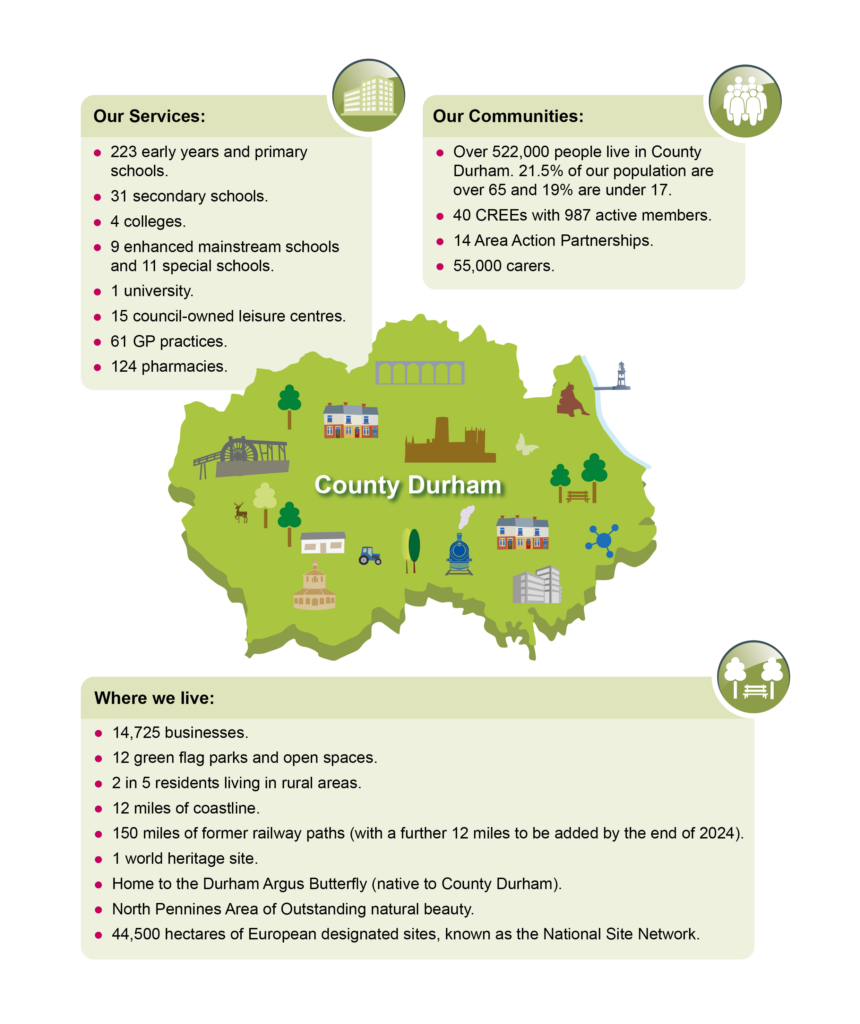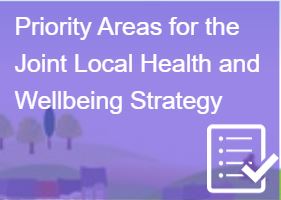 |
 |
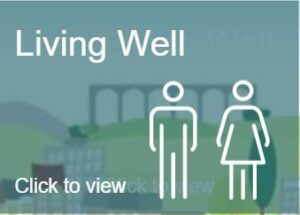 |
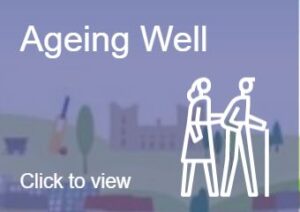 |
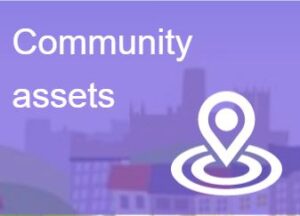 |
 |
|---|
Who are strategic assets for?
Strategic assets are mainly identified for professionals such as commissioners, clinical directors, voluntary and community sector and other distributors of funding or providers of services. However, anyone, including communities and individuals, can use strategic assets to ask questions about how strategic assets benefit or work in their area.
What are strategic assets?
Strategic assets are:
- services, activities, and initiatives that we commission or grant fund for the benefit of communities across County Durham
- resources that we have available to us to support communities across County Durham such as workforce, training, or partnerships
- knowledge and insight that our communities and workforce have that they have told us about through research, consultation or other forms of engagement
- experience that our communities and workforce have of living or working in County Durham and/or services that are provided
County Durham has many assets that can support and protect the health of our residents, some of these are set out below:
Why is identifying strategic assets important?
Identifying strategic assets helps us to understand what is already available across County Durham. It can help to:
- understand where pooling of resources and joint commissioning can be most effective and efficient
- identify and maximise the impact of existing assets and resources while reducing duplication
- proportionately target our collective resources to the people and communities that need them the most
- understand and develop strength and asset-based approaches to working with communities
- highlight the importance of always considering people, locations, and services that are already out there addressing needs
- develop local evidence-based priorities for commissioning which will improve the public’s health and reduce inequalities
Identifying strategic assets is not about identifying exactly where services and initiatives are delivered in communities but can help us to ask questions such as:
- What services, resources, experience and knowledge are already available to communities?
- Where can additional funding add value to existing resources?
- Where there are gaps in services, resources, experience and knowledge?
- Where can we reduce duplication of service/resource?
- Where can we be more efficient and effective as a system?
- Where can we work more collaboratively and pool funding?
- Do communities see strategic assets as assets within their community?
- What do communities think is good about strategic assets and what could be better?
Examples of possible use:
Local Networks identify a gap in their area. Is there something already there that is delivering this that covers this area? Yes – can we add value to an existing contract and make sure we get what is needed in this area? No – do other areas need this?
NHSE identify some funding for a specific purpose. ICB/PCNs can see whether there is something already delivering this type of service in the area. If yes, is there any added value from additional funding? If no, develop a new service?
County Durham’s strategic assets by topic area
Tobacco Control

